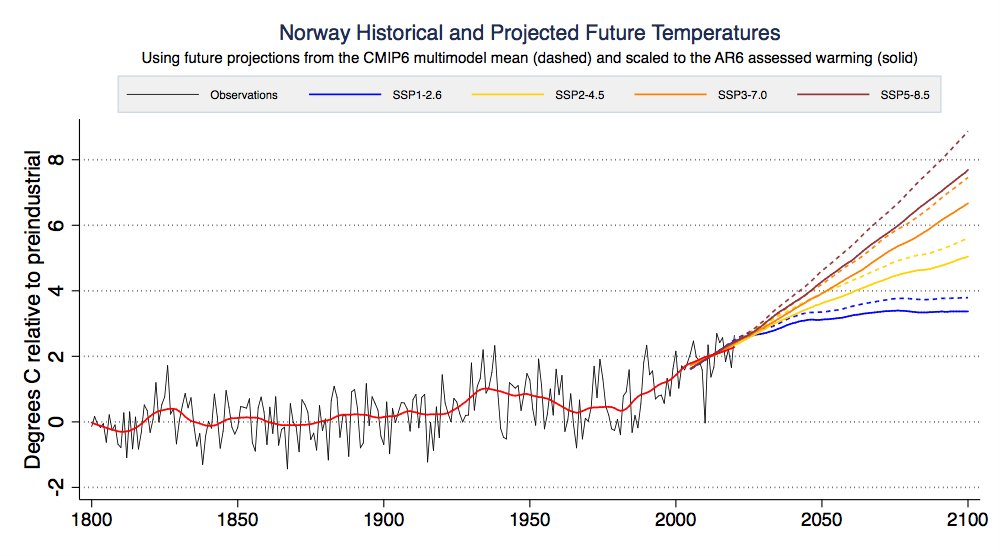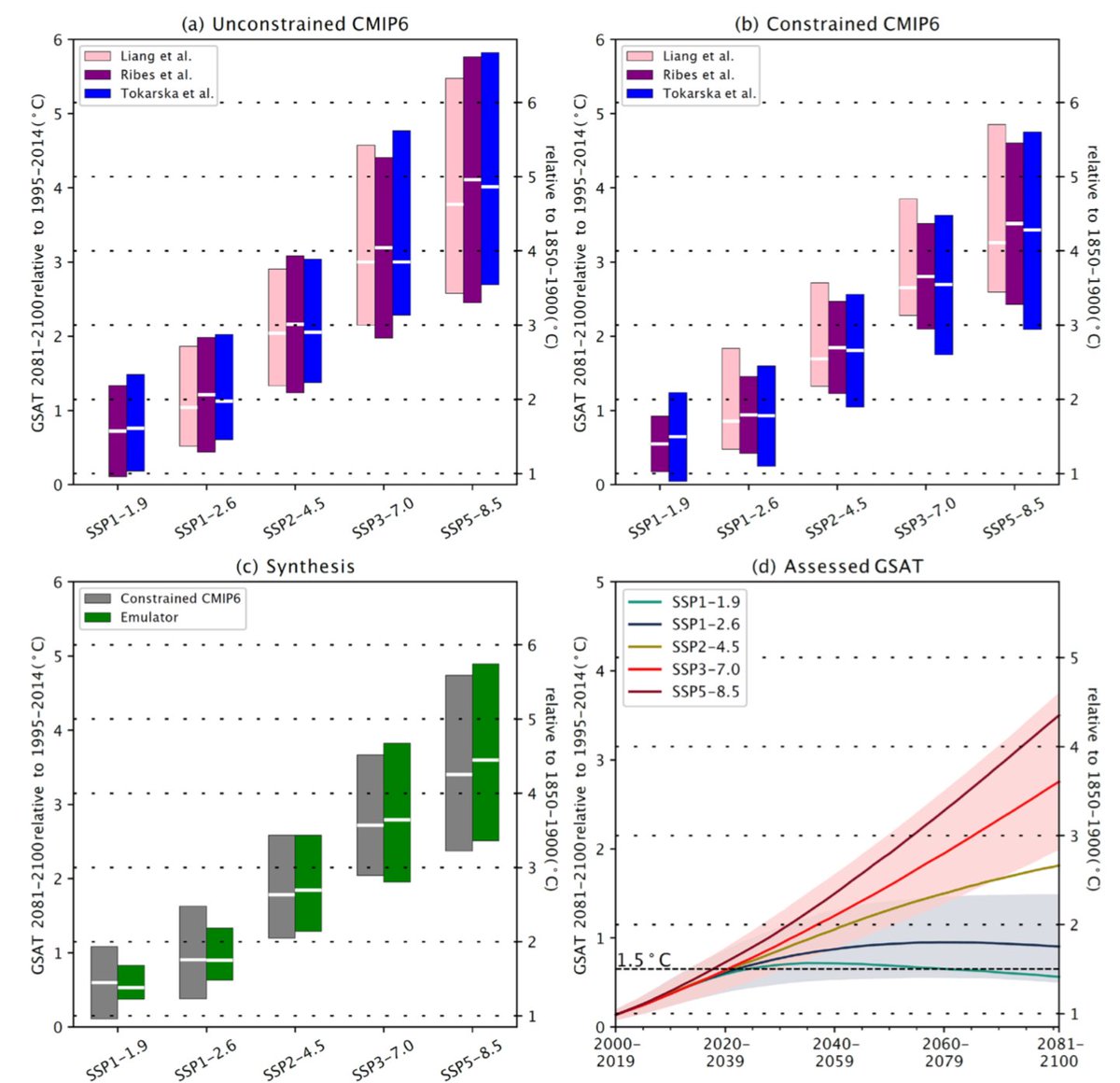
Interesting op-ed on geoengineering today by @coralsncaves and @MichaelEMann. Unfortunately, I have to disagree with their suggestion that negative emissions technologies (NETs) are "unlikely to make a meaningful dent in atmospheric CO2". thehill.com/opinion/energy…
A thread: 1/14
A thread: 1/14
In the article they note that IPCC scenarios that peak warming at 1.5C by mid-century later involve substantial drawdown of atmospheric CO2 that prevents further increases in surface temps and is followed by global-scale cooling after emissions go negative. 2/
This is broadly accurate; for example, the new SSP1-1.9 scenario overshoots mid-century resulting in around 1.6C warming, before falling back to 1.4C by 2100 though a very aggressive deployment of net-negative emissions: 3/ 

Where I disagree is their claim that if we achieve negative emissions "it will be because we reduce emissions below the level of uptake by natural carbon sinks" and "carbon removal technology" is unlikely to make a meaningful dent in atmospheric CO2 concentrations. 4/
It is true that – once we get to net-zero – natural sinks start reducing atmospheric CO2 concentrations relatively quickly. This is balanced out by continued ocean warming, so the "zero emissions commitment" is flat or very slightly declining temps (+/- 0.3C) through 2100. 5/ 

Natural carbon sinks by themselves will thus not result in a meaningful reduction in temps this century – and do not represent negative emissions per se. Negative emissions come in the form of active carbon removal by humans – either through biosphere or geologic storage. 6/
If we ever want to reduce future temps much below the level they are at when we reach net zero, we will need large-scale net-negative emissions. This will involve both planting trees and other ways of enhancing biosphere storage, and things like direct air capture of CO2. 7/
Enhanced biosphere storage of CO2 through human interventions is necessarily limited – for example, reforesting all readily available land area would only capture an equivalent of ~9 years of current emissions. 8/ 

Biosphere storage is also temporary, and subject to risks of fires, droughts, and insects that will become worse in a warming world. This does not mean that we should not aggressively pursue it, just that we should be aware of its limitations. 9/
In nearly all 1.5C emissions scenarios assessed by the IPCC, the bulk of negative emissions occurs through removing CO2 from the air and storing it in geologic reservoirs. This happens via bioenergy with carbon capture and storage or direct air capture of CO2. 10/
I've long been critical of some models over-reliance on these NETs, and their use to delay the rate of modeled mitigation. At the same time, if we want to limit warming to 1.5C we are so close today that avoiding overshoot is unlikely, and net-negative will be needed. 11/
So at the end of the day, if we want to reduce global temps in the future after we hit net-zero, we will need large-scale net-negative emissions. There will also be a long tail of hard to decarbonize emissions where negative emissions tech will be useful to counterbalance. 12/
We should avoid relying too much on assumed future planetary scale engineering, and mitigate based on a future where large-scale NETs do not pan out. We should plan on avoiding using NETs in models or the real world as a replacement for all but the hardest to mitigate emissions.
But at the same time NETs are a critical arrow in our proverbial quiver to achieve our most ambitious climate targets. We need far more investments in NETs today, and arguments that they are a dangerous distraction are, themselves, dangerously misguided. 14/
• • •
Missing some Tweet in this thread? You can try to
force a refresh











